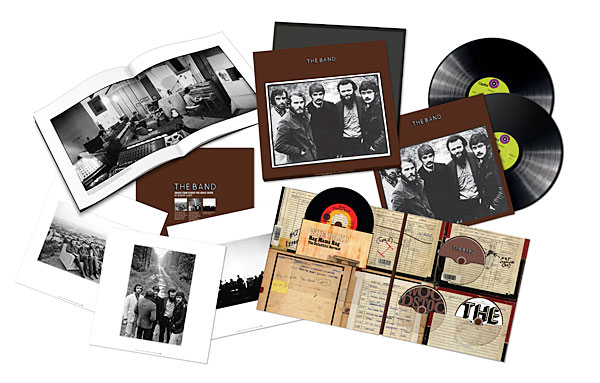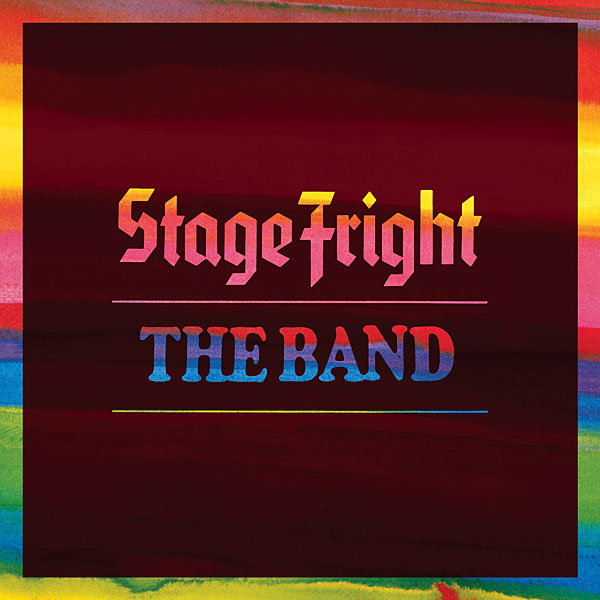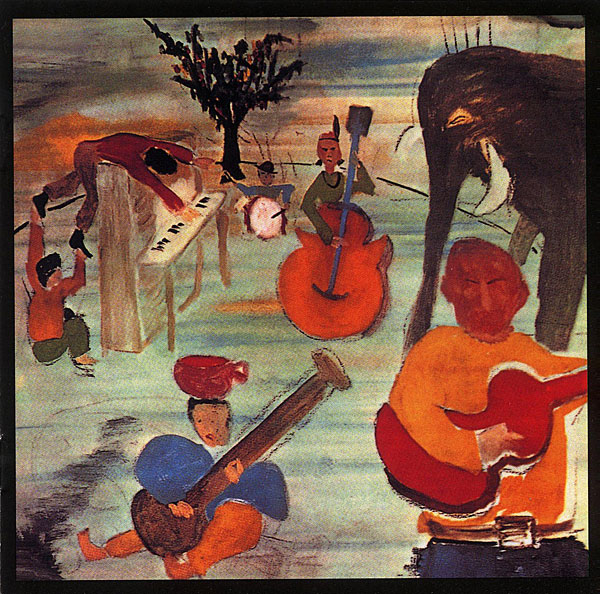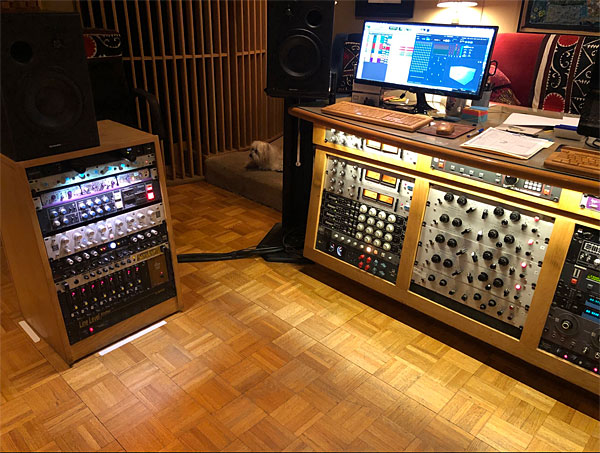Genuine But Better: How Bob Clearmountain Mixes The Band in Surround Page 2
Clearmountain: Oh yeah. I worked on that one a lot! I mean, you've gotta understand—I grew up listening to these records, and I'm as big a fan of The Band as anyone. Obviously, it's a little nerve-wracking, and I really wanted it to be genuine—but better.
You know, I'm a big Garth fan too. Plus, well—I like organs! (laughs) That particular intro thing was something that always gave me chills. And in the surround version, I actually added a bit more effects to it just to make it a bit more dramatic, if possible.
Mettler: It comes across so well to the point where, when I was listening to the remixed stereo of "Chest Fever" on both the vinyl and the CD, after hearing the surround version on the Blu-ray, I was like, "I don't want to hear it in stereo anymore."
Clearmountain: Oh, that's great! (chuckles)

Mettler: I'm inclined to feel the same way with the self-titled album as well, especially after hearing a song like "Rag Mama Rag" in surround, because you're dealing with those piano parts that are on one side, and then the way the outro just kind of rolls out. Also, you've got the tuba from John Simon [a friend of The Band who also happened to have produced Big Pink] in the mix there too. All these great elements come out even more in surround, I think.
Clearmountain: Yeah. Great. Well, usually, I kept the horn section in the back speakers, just so you could hear them on their own if you walk up to the rear speakers.
Mettler: I fully attest that I often do just that whenever I'm listening to and/or reviewing surround mixes. I'll get up and step over to the rear right side and just kind of "check in" with what's going on back there specifically, and then I'll go over to the rear left and do the same thing.
Clearmountain: That's one of the nice things about surround. Everybody thinks, "Well, you've gotta be sitting right in the right place to get surround"—but I don't think that's true at all. I think that's one of the coolest things about surround mixes. That's why I like to mix discreetly like that and put things in different speakers, so you can listen to it in a lot of different ways. You can go back and listen to it again and hear it completely differently by standing in a different part of the room, you know?

Mettler: Yep, I do that too! (both laugh) Well, it's now almost a full year later, and we're here talking about Stage Fright for our semi-annual 5.1 roundup. (Clearmountain laughs) As we talked about before, The Band record was made in the Sammy Davis poolhouse in the Hollywood Hills, but Stage Fright was done in the Woodstock Playhouse locale. In terms of the physicality of all the members of The Band in those locations, did you feel you had two different physical spaces to work around, so to speak?
Clearmountain: Yeah, they're a bit different—but it wasn't drastically different. The Stage Fright recording is actually a little bit better than The Band, and Todd Rundgren had recorded it. He's actually a pretty good engineer. And besides being a Band fan, I'm also a Rundgren fan.
Mettler: Me too. Have you and Todd ever talked about Stage Fright at all? Have you guys ever had any interactions about it?
Clearmountain: I mean, I've talked to Todd, but not about that in particular. I never realized he was involved with The Band like that; I didn't know any of the details. I didn't realize he was just an engineer on it. I thought he had actually co-produced it, or something.
Mettler: Glyn Johns had done some of the Stage Fright mixes as well.
Clearmountain: That's right. Glyn Johns did one, and then there were two mixes—and nobody seems to know who did what, entirely. But the recording was quite good. What was really funny was, they had lost one of the tapes for—what's the first song on the album?
Mettler: In the resequenced version, the first song is "The W.S. Walcott Medicine Show."
Clearmountain: Right. Well, they had lost that tape, and they couldn't find it. It was mislabeled in the vault somewhere, so they had us looking through all these outtakes to see if maybe it was one of the outtakes tapes that actually had it.
But in there, I found a really funny slate [a verbal ID that's given before a take is performed] where Todd Rundgren says, "Ok, fellas, we're a quarter of the way to a hundred takes!" (MM laughs) It was Take 25, and the final take ended up being Take 26. I had actually chopped that comment onto the final take for the 5.1 mix, but Robbie didn't go for it.

Mettler: Oh, that's a bummer you couldn't leave that slate on there.
Clearmountain: I know! It would have been really funny, but I couldn't talk Robbie into doing it.
Mettler: Ahh, too bad. I really like hearing the studio chatter that shows up on alternate takes on box sets, I have to say.
Clearmountain: I think people would have loved it—Rundgren fans especially. I know people love that stuff, but oh well! (chuckles)
Anyway, Stage Fright was actually a really fun record. With Music From Big Pink, I was trying to duplicate the vibes of the original mixes, as Robbie really wanted to keep it true to the original.
The self-titled album was a bit looser. Robbie said, "Oh, you can just try a few things here and there." But then on Stage Fright, especially on "Medicine Show," he said, "Let's just completely change it"—and that got a lot looser.
Mettler: It sure did. In the surround mix for Stage Fright, I feel like Robbie's literally on my left shoulder because of where his guitar fills go, and then Garth [Hudson] is on the other side. And then, on a track like "The Rumor," where we have vocals spread across the front stage, depending on who's singing, certain lines get put in a different space.
Clearmountain: Yeah, yeah, exactly. Well, I'm glad to hear it's coming off that way.

Mettler: Oh, it totally does. Well, one last thing. I suggested this to Robbie when I spoke to him recently, and I want to put the bug in your ear too, so to speak. Since you also worked on the self-titled Robbie Robertson record that came out in October 1987, I feel having songs like "Somewhere Down the Crazy River" on there just begs for it all to be done in a surround mix, don't you think?
Clearmountain: Oh, that would be fun. That was one of the favorite mixes I've ever done. We mixed it at Bearsville [Studios in Woodstock, New York]. I had the lights turned down really low, and I remember just sitting there in Studio B. Robbie was in the other room, Studio A, doing some overdubs, and something else.
I'd been working on it for about four hours, and the mix was done. I mean, I had finished the mix in like two hours, but then Robbie comes in and he goes, "How close is it?" And I said, "Oh, man—I've been done for about two hours. I've just been sitting here listening to it. I just can't stop listening to it." Because I loved it so much, you know?
Mettler: Yeah, I do know, because I went and got it immediately when it was released on CD, and could not stop playing it myself. Every track on the Robbie Robertson album meant something to me, and it really captured something I think we needed to hear in '87. Well, since that self-titled album's 35th anniversary is in 2022, maybe you could talk to the powers that be at Universal or UMe, and engineer that one as a surround sound project for us. What do you say, Bob?
Clearmountain: Oh, that would be great. I really hope they let me do that, yeah.





























































